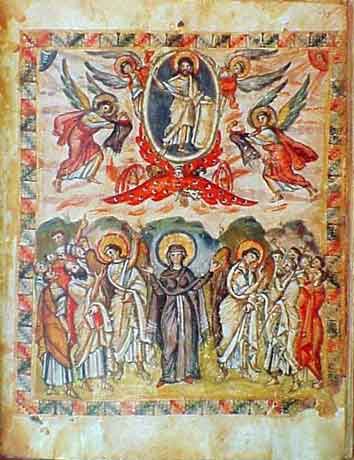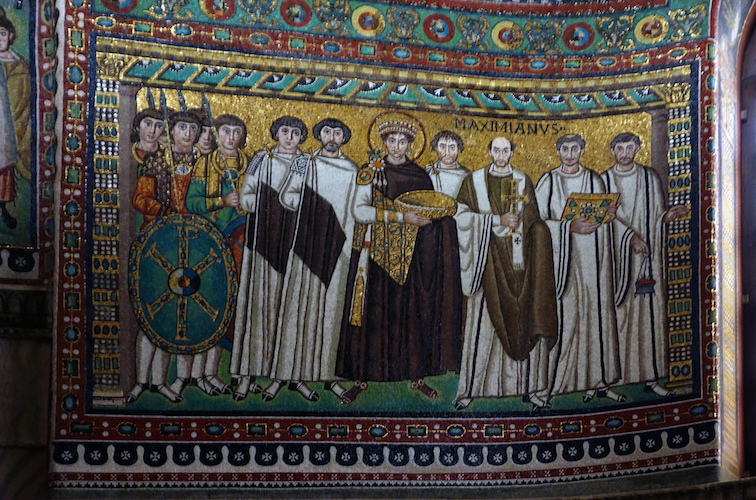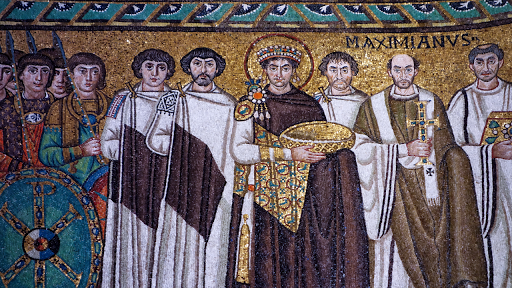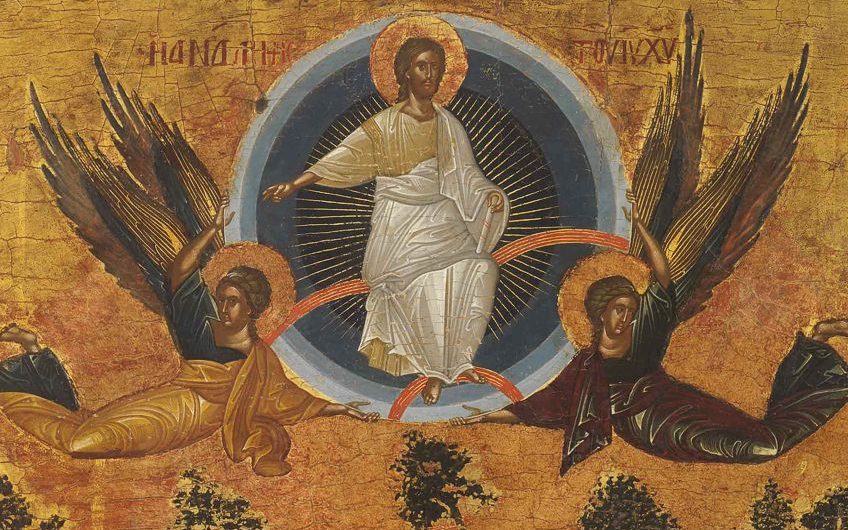12+ The continuing byzantine use of classical art forms info
Home » Wallpapers » 12+ The continuing byzantine use of classical art forms infoYour The continuing byzantine use of classical art forms images are available. The continuing byzantine use of classical art forms are a topic that is being searched for and liked by netizens today. You can Find and Download the The continuing byzantine use of classical art forms files here. Get all free photos.
If you’re searching for the continuing byzantine use of classical art forms images information related to the the continuing byzantine use of classical art forms topic, you have visit the ideal blog. Our website frequently gives you hints for seeking the highest quality video and image content, please kindly hunt and locate more informative video content and graphics that match your interests.
The Continuing Byzantine Use Of Classical Art Forms. An official art the essential aim of which was the glorification of God and the Emperor an oriental art embodying the lessons both of Greece and of the ancient Asiatic East an art complex and manifold secular as well as religious. Owing to the several key events the Byzantine. Mosaics and frescoes were still used for church decoration although frescoed wall paintings became more popular. The form of mosaic art was very popular in Byzantium.
 V Byzantine Style Continued A Log Holder Byzantine Art Byzantine Illuminated Manuscript From pinterest.com
V Byzantine Style Continued A Log Holder Byzantine Art Byzantine Illuminated Manuscript From pinterest.com
It is even popular now. It was in Constantinople that an imperial art arose in the sixth century. By Byzantine art is meant the art of Constantinople sometimes called Byzantium in the middle ages as in antiquity and of the Byzantine empire. The permeation of Byzantine art into Russia was initiated in 989 by the marriage of Vladimir of Kiev with the Byzantine princess Anna and his conversion to Eastern Christianity. Content from both Christianity and classical Greek mythology were artistically expressed through Hellenistic modes of style and iconography. Mosaics and frescoes were still used for church decoration although frescoed wall paintings became more popular.
By Byzantine art is meant the art of Constantinople sometimes called Byzantium in the middle ages as in antiquity and of the Byzantine empire.
Generally speaking the main characteristics of Byzantine art include a departure from classical art forms that were highly realistic in natureByzantine artists were less concerned with mimicking reality and more in tune with symbolism religious symbolism in particular. In 330 AD Emperor Constantine moved the capital of the Basileia ton Rhomaion the empire of the Romans from Rome to Byzantium renamed Constantinople and now called Istanbul. By Byzantine art is meant the art of Constantinople sometimes called Byzantium in the middle ages as in antiquity and of the Byzantine empire. Byzantine art didnt have great interest in the human body that classical artists had but the use of glowing colors had a great significance to most religious paintings. Generally speaking the main characteristics of Byzantine art include a departure from classical art forms that were highly realistic in nature. It was in Constantinople that an imperial art arose in the sixth century.
 Source: theartstory.org
Source: theartstory.org
The style in which these mosaics and frescoes were executed reflected their function as static symbolic images of the divine and the Absolute. Mosaics and frescoes were still used for church decoration although frescoed wall paintings became more popular. Owing to the several key events the Byzantine. Byzantine capitals break away from the Classical conventions of ancient Greece and Rome with sinuous lines and naturalistic forms which are precursors to the Gothic style. Generally speaking the main characteristics of Byzantine art include a departure from classical art forms that were highly realistic in nature.
 Source: hellenicaworld.com
Source: hellenicaworld.com
Mosaics and frescoes were still used for church decoration although frescoed wall paintings became more popular. The Byzantine capital Constantinople was adorned with a large number of classical. Byzantine art didnt have great interest in the human body that classical artists had but the use of glowing colors had a great significance to most religious paintings. Why are flattened forms and stylized features characteristic to Byzantine images of Christ such as this example. An official art the essential aim of which was the glorification of God and the Emperor an oriental art embodying the lessons both of Greece and of the ancient Asiatic East an art complex and manifold secular as well as religious.
 Source: fr.pinterest.com
Source: fr.pinterest.com
In Christ and the Apostles Christ is depicted as a. In 330 AD Emperor Constantine moved the capital of the Basileia ton Rhomaion the empire of the Romans from Rome to Byzantium renamed Constantinople and now called Istanbul. The Byzantine Empire emerged as a distinct artistic cultural entity radically influencing the Medieval Renaissance Era architecture in Europe the Ottoman Empire. Byzantine mosaicists were working in the Hagia Sophia at Kiev by the 1040s and the Byzantine impact on Russian medieval painting remained crucial long after the fall of Constantinople. Individual features were suppressed in favour of a standard facial.
 Source: stellardesignss.wordpress.com
Source: stellardesignss.wordpress.com
And it is in Justinians time that this art which may henceforth be called Byzantine has expressed itself fully and in a definitive form. The mature Byzantine style evolved through the stylization and standardization of late Classical forms of Early Christian art was based on the dynamic of lines and flat areas of colour rather than form. Symbolizes the holy spirit and presence of God. Some of the columns were also made of marble. The permeation of Byzantine art into Russia was initiated in 989 by the marriage of Vladimir of Kiev with the Byzantine princess Anna and his conversion to Eastern Christianity.
![]() Source: wikiwand.com
Source: wikiwand.com
As you can see it is very detailed with all the type of materials. Individual features were suppressed in favour of a standard facial. The Byzantine Empire emerged as a distinct artistic cultural entity radically influencing the Medieval Renaissance Era architecture in Europe the Ottoman Empire. People used it all over. Byzantine art originated and evolved from the Christianized Greek culture of the Eastern Roman Empire.
 Source: khanacademy.org
Source: khanacademy.org
Symbolizes the holy spirit and presence of God. Some of the columns were also made of marble. Artistic forms characteristic of Byzantine art began to develop in the Roman Empire as early as the 4th century as the classical tradition declined in vitality and eastern influences were more widely felt. Other widely used materials were bricks and stone. The permeation of Byzantine art into Russia was initiated in 989 by the marriage of Vladimir of Kiev with the Byzantine princess Anna and his conversion to Eastern Christianity.
 Source: pinterest.com
Source: pinterest.com
This was especially true in Italy where Byzantine styles persisted in modified form through the twelfth century. However few incoming influences affected Byzantine style. In 330 AD Emperor Constantine moved the capital of the Basileia ton Rhomaion the empire of the Romans from Rome to Byzantium renamed Constantinople and now called Istanbul. It represents the form of art which followed the classical after the transitional interval of the early Christian period. The style in which these mosaics and frescoes were executed reflected their function as static symbolic images of the divine and the Absolute.

Symbolizes the holy spirit and presence of God. In 330 AD Emperor Constantine moved the capital of the Basileia ton Rhomaion the empire of the Romans from Rome to Byzantium renamed Constantinople and now called Istanbul. Byzantine capitals break away from the Classical conventions of ancient Greece and Rome with sinuous lines and naturalistic forms which are precursors to the Gothic style. It represents the form of art which followed the classical after the transitional interval of the early Christian period. The richest interiors were finished with thin plates of marble or stone.
 Source: pinterest.com
Source: pinterest.com
The art of Byzantium never lost sight of its classical heritage. By Byzantine art is meant the art of Constantinople sometimes called Byzantium in the middle ages as in antiquity and of the Byzantine empire. Why are flattened forms and stylized features characteristic to Byzantine images of Christ such as this example. In Christ and the Apostles Christ is depicted as a. In 330 AD Emperor Constantine moved the capital of the Basileia ton Rhomaion the empire of the Romans from Rome to Byzantium renamed Constantinople and now called Istanbul.
Source: metmuseum.org
It represents the form of art which followed the classical after the transitional interval of the early Christian period. It represents the form of art which followed the classical after the transitional interval of the early Christian period. Why are flattened forms and stylized features characteristic to Byzantine images of Christ such as this example. By Byzantine art is meant the art of Constantinople sometimes called Byzantium in the middle ages as in antiquity and of the Byzantine empire. Art during the final centuries of the Byzantine Empire is known as Late Byzantine art and the styles and conventions of the Early and Middle Byzantine periods begin to change to reflect emerging dynamics and tastes.
 Source: artincontext.org
Source: artincontext.org
The art of Byzantium never lost sight of its classical heritage. Mosaics and frescoes were still used for church decoration although frescoed wall paintings became more popular. By Byzantine art is meant the art of Constantinople sometimes called Byzantium in the middle ages as in antiquity and of the Byzantine empire. And it is in Justinians time that this art which may henceforth be called Byzantine has expressed itself fully and in a definitive form. Art during the final centuries of the Byzantine Empire is known as Late Byzantine art and the styles and conventions of the Early and Middle Byzantine periods begin to change to reflect emerging dynamics and tastes.
![]() Source: gr.pinterest.com
Source: gr.pinterest.com
The art of Byzantium never lost sight of its classical heritage. And it is in Justinians time that this art which may henceforth be called Byzantine has expressed itself fully and in a definitive form. By Byzantine art is meant the art of Constantinople sometimes called Byzantium in the middle ages as in antiquity and of the Byzantine empire. The art of Byzantium never lost sight of its classical heritage. Byzantine art didnt have great interest in the human body that classical artists had but the use of glowing colors had a great significance to most religious paintings.
 Source: tr.pinterest.com
Source: tr.pinterest.com
The art of Byzantium never lost sight of its classical heritage. Byzantine art didnt have great interest in the human body that classical artists had but the use of glowing colors had a great significance to most religious paintings. Byzantine art originated and evolved from the Christianized Greek culture of the Eastern Roman Empire. By Byzantine art is meant the art of Constantinople sometimes called Byzantium in the middle ages as in antiquity and of the Byzantine empire. Individual features were suppressed in favour of a standard facial.
 Source: pinterest.com
Source: pinterest.com
And it is in Justinians time that this art which may henceforth be called Byzantine has expressed itself fully and in a definitive form. And it is in Justinians time that this art which may henceforth be called Byzantine has expressed itself fully and in a definitive form. Content from both Christianity and classical Greek mythology were artistically expressed through Hellenistic modes of style and iconography. The art of Byzantium never lost sight of its classical heritage. Byzantine art was highly prestigious and sought-after in Western Europe where it maintained a continuous influence on medieval art until near the end of the period.
 Source: pinterest.com
Source: pinterest.com
Other widely used materials were bricks and stone. Owing to the several key events the Byzantine. Symbolizes the holy spirit and presence of God. Byzantine art didnt have great interest in the human body that classical artists had but the use of glowing colors had a great significance to most religious paintings. The art of Byzantium never lost sight of its classical heritage.
 Source: pinterest.com
Source: pinterest.com
Art during the final centuries of the Byzantine Empire is known as Late Byzantine art and the styles and conventions of the Early and Middle Byzantine periods begin to change to reflect emerging dynamics and tastes. Content from both Christianity and classical Greek mythology were artistically expressed through Hellenistic modes of style and iconography. Other widely used materials were bricks and stone. It was in Constantinople that an imperial art arose in the sixth century. Mosaics and frescoes were still used for church decoration although frescoed wall paintings became more popular.
Source: indonesiadesign.com
The art of Byzantium never lost sight of its classical heritage. Artists diverged from naturalistic form to suggest an otherworldly being. However few incoming influences affected Byzantine style. The Byzantine Empire emerged as a distinct artistic cultural entity radically influencing the Medieval Renaissance Era architecture in Europe the Ottoman Empire. Mosaics and frescoes were still used for church decoration although frescoed wall paintings became more popular.
 Source: courses.lumenlearning.com
Source: courses.lumenlearning.com
An official art the essential aim of which was the glorification of God and the Emperor an oriental art embodying the lessons both of Greece and of the ancient Asiatic East an art complex and manifold secular as well as religious. Generally speaking the main characteristics of Byzantine art include a departure from classical art forms that were highly realistic in natureByzantine artists were less concerned with mimicking reality and more in tune with symbolism religious symbolism in particular. Byzantine mosaicists were working in the Hagia Sophia at Kiev by the 1040s and the Byzantine impact on Russian medieval painting remained crucial long after the fall of Constantinople. In 330 AD Emperor Constantine moved the capital of the Basileia ton Rhomaion the empire of the Romans from Rome to Byzantium renamed Constantinople and now called Istanbul. Other widely used materials were bricks and stone.
This site is an open community for users to share their favorite wallpapers on the internet, all images or pictures in this website are for personal wallpaper use only, it is stricly prohibited to use this wallpaper for commercial purposes, if you are the author and find this image is shared without your permission, please kindly raise a DMCA report to Us.
If you find this site value, please support us by sharing this posts to your preference social media accounts like Facebook, Instagram and so on or you can also bookmark this blog page with the title the continuing byzantine use of classical art forms by using Ctrl + D for devices a laptop with a Windows operating system or Command + D for laptops with an Apple operating system. If you use a smartphone, you can also use the drawer menu of the browser you are using. Whether it’s a Windows, Mac, iOS or Android operating system, you will still be able to bookmark this website.
Category
Related By Category
- 32++ Puffle coloring pages ideas
- 21++ Ethan coloring pages information
- 23+ Warrior princess coloring pages ideas
- 30+ Christmas ninja turtles coloring pages ideas
- 25+ Pokemon coloring pages gallade ideas in 2021
- 39+ The meaning of classical in art info
- 28+ Hanzo coloring page information
- 32++ What was the primary focus of much classical art ideas in 2021
- 12++ Coconut tree coloring page ideas
- 18++ Camelot coloring pages ideas in 2021